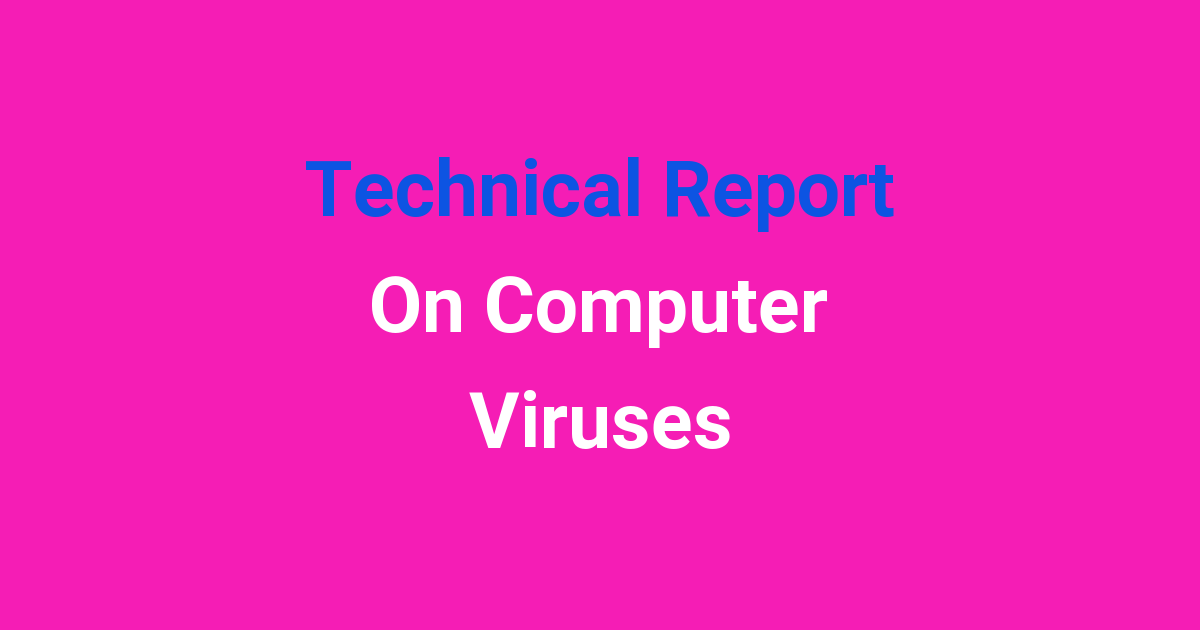Technical report discussing computer virus vulnerabilities and protections.
Technical Report on Computer Viruses
Introduction
Computer viruses are malicious programs that are designed to infect and harm computers. They can cause a range of problems, from slowing down a computer’s performance to stealing sensitive information. In recent years, the number of computer viruses has been increasing rapidly, posing a threat to individuals and organizations alike. It is important to understand how computer viruses work and how to protect against them.
Problem Statement
The problem of computer viruses is a serious one that affects millions of people around the world. Viruses can infect computers through various means, such as email attachments, infected websites, and external storage devices. Once a computer is infected, the virus can spread to other computers on the same network, causing widespread damage. This can result in loss of data, financial loss, and even identity theft.
Existing System
The existing system for dealing with computer viruses involves using antivirus software to detect and remove malicious programs. While antivirus software is effective to some extent, it is not foolproof. New viruses are being created all the time, and antivirus software may not be able to keep up with the rapid pace of development. This leaves computers vulnerable to new threats that are not detected by antivirus programs.
Disadvantages
There are several disadvantages to relying solely on antivirus software to protect against computer viruses. First, antivirus software can be expensive, especially for businesses that need to protect multiple computers. Second, antivirus software can slow down a computer’s performance, as it needs to constantly scan for new threats. Finally, antivirus software may not be able to detect all types of viruses, leaving computers vulnerable to attack.
Proposed System
In order to address the limitations of the existing system, it is proposed to develop a new system for detecting and removing computer viruses. This system will use a combination of signature-based detection and behavioral analysis to identify and eliminate malicious programs. Signature-based detection involves comparing the code of a suspected program to a database of known viruses, while behavioral analysis looks for suspicious behavior that may indicate the presence of a virus.
Advantages
The proposed system has several advantages over traditional antivirus software. First, it is more effective at detecting new and unknown viruses, as it uses both signature-based detection and behavioral analysis. This means that computers are less likely to be infected by new threats that have not yet been identified by antivirus programs. Second, the proposed system is more efficient, as it does not need to constantly scan for new viruses, reducing the strain on a computer’s resources. Finally, the proposed system is more cost-effective, as it does not require the purchase of expensive antivirus software.
Features
The new system for detecting and removing computer viruses will have several key features. First, it will be able to detect both known and unknown viruses using a combination of signature-based detection and behavioral analysis. Second, it will be able to automatically remove infected files without the need for manual intervention. Finally, the system will be able to run in the background without impacting a computer’s performance, ensuring that users can continue to work without interruption.
Conclusion
In conclusion, computer viruses are a serious threat that can cause a range of problems for individuals and organizations. The existing system for dealing with computer viruses has limitations that make computers vulnerable to new threats. By developing a new system for detecting and removing computer viruses, it is possible to provide better protection against malicious programs. The proposed system offers several advantages over traditional antivirus software, including improved detection rates, efficiency, and cost-effectiveness. It is important to continue researching and developing new systems for dealing with computer viruses in order to stay one step ahead of cyber threats.

